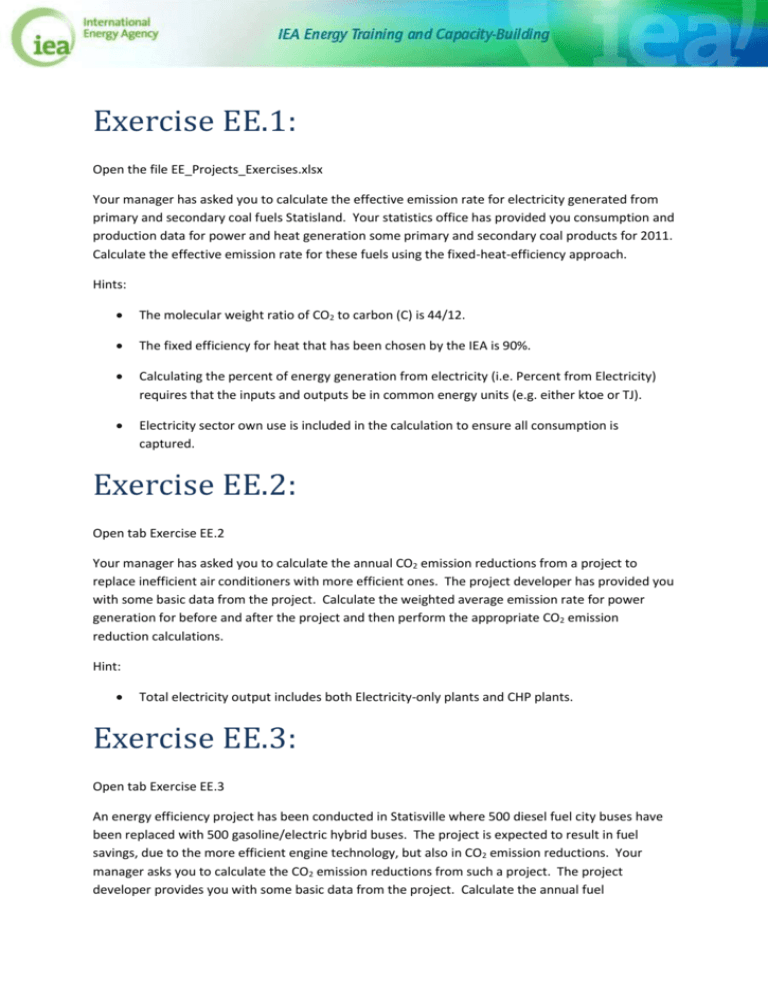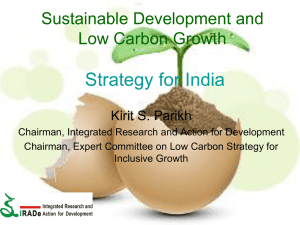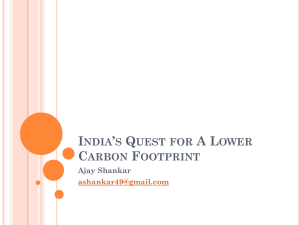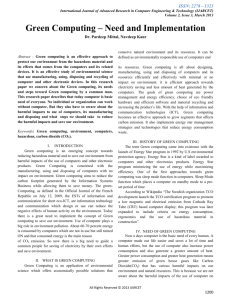Exercise EE.1: Open the file EE_Projects_Exercises.xlsx Your
advertisement

Exercise EE.1: Open the file EE_Projects_Exercises.xlsx Your manager has asked you to calculate the effective emission rate for electricity generated from primary and secondary coal fuels Statisland. Your statistics office has provided you consumption and production data for power and heat generation some primary and secondary coal products for 2011. Calculate the effective emission rate for these fuels using the fixed-heat-efficiency approach. Hints: The molecular weight ratio of CO2 to carbon (C) is 44/12. The fixed efficiency for heat that has been chosen by the IEA is 90%. Calculating the percent of energy generation from electricity (i.e. Percent from Electricity) requires that the inputs and outputs be in common energy units (e.g. either ktoe or TJ). Electricity sector own use is included in the calculation to ensure all consumption is captured. Exercise EE.2: Open tab Exercise EE.2 Your manager has asked you to calculate the annual CO2 emission reductions from a project to replace inefficient air conditioners with more efficient ones. The project developer has provided you with some basic data from the project. Calculate the weighted average emission rate for power generation for before and after the project and then perform the appropriate CO2 emission reduction calculations. Hint: Total electricity output includes both Electricity-only plants and CHP plants. Exercise EE.3: Open tab Exercise EE.3 An energy efficiency project has been conducted in Statisville where 500 diesel fuel city buses have been replaced with 500 gasoline/electric hybrid buses. The project is expected to result in fuel savings, due to the more efficient engine technology, but also in CO2 emission reductions. Your manager asks you to calculate the CO2 emission reductions from such a project. The project developer provides you with some basic data from the project. Calculate the annual fuel consumption from the bus fleet before and after the project. Then perform the appropriate CO2 emission reduction calculations. Hints: Fuel efficiency is typically measured in number of litres of fuel consumed per 100 kilometres travelled. Gasoline/electric hybrid technology uses the gasoline engine to charge batteries on the bus that provide electricity to motors that drive the wheels of the bus. This technology does not require that the batteries are charged from the electric power grid. Gasoline and diesel fuels have different energy content, different densities and produce different levels of CO2 emissions when combusted. CO2 emission reductions are typically calculated as the difference in emissions before and after the project. © IEA/OECD 2013











